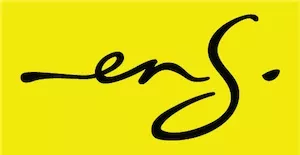- within International Law, Law Department Performance and Cannabis & Hemp topic(s)
If you ask the average Joe what a trade mark is, you may well be told that it's a product name. More business-savvy folks might say that a trade mark can be a logo, a slogan, a colour... perhaps even a signature. But there are certain types of trade marks that the man-in-the-street is unlikely to be aware of. We'll discuss some of these rarer trade marks in this article.
Motion trade marks
Cole (Cold) Palmer – celebration time, come on!
If you're one of the millions of footy-mad people who like to watch UK Premier League, you'll recognise the name Cole Palmer. Palmer is an impressive young footballer who scores loads of goals for his club, Chelsea. Palmer likes to celebrate his goals with what is referred to as his 'cold' goal celebration, something that involves him pretending that he's freezing and rubbing his arms to warm up.

Palmer's motion trade mark is registered and subject to the following endorsement.
'Registration of this mark shall give no right to the exclusive use of a sign comprising any person other than the person shown in the motion mark, or a representation or lookalike of the person shown in the motion mark, making the movement shown in the motion mark.'
The IPKat blog has discussed Palmer's trade mark filing. It suggests that 'more thought has gone into... filing as a motion trade mark and adding a description, than many trade mark registrations which purport to protect footballers' goal celebrations, which are often simply filed as a photo of the celebration itself.'
There you have it – Palmer is definitely a game-changer!
Windows
We'll briefly mention another application to register a motion trade mark in the EU – this one was in class 12 for 'vehicle windows for expedition vehicles'. The EU IP Office (EUIPO) refused the application based on a lack of distinctiveness.
On appeal the Board of Appeal upheld the refusal, saying that 'the trade mark showed nothing more than the opening and closing of a window... no further arbitrary elements.' It added that the 'simple movement of common objects are unlikely to be considered distinctive'.
That sounds about right!
Position marks
A recent EU trade mark case dealt with what are called 'position marks', in this case, decorative elements applied to footwear. The applicant in this case was a company called Loro Piana S.p.A, and the 4th Board of Appeal delivered its judgment on 15 December 2024.
Loro Piana described the position trade mark it wanted to register as one comprising a 'combination of a ring...and hidden metal, one in the shape of a lock and the other in the shape of gratings... which, as a whole, is applied to the mask of the upper covering the upper part of the foot, in whole or in part, and always positioned closer to the tab, than the top of the shoe' (apologies for the lumpy Euro-speak!).
The Board of Appeal made these observations - 'it is common practice to place decorative elements on shoe uppers. However, the sign in question is merely a further variant of the many existing market elements that use decorative elements that are more or less simple, alone or in combination with each other. Indeed, the position of the sign and its representation do not depart significantly from the norm or customs of the relevant sector.'
The BOA concluded that inherent distinctiveness had not been proven And there was no need to consider acquired distinctiveness because the necessary article, 7(3), had not been raised! Here's a representation of the trade mark:

We'll end with a short note on a topic that can be amusing, but in this case, isn't.
Offensive marks
In a recent EU case, the issue was whether the trade mark MARICON PERDIDI is contrary to morality and therefore unregistrable.
So, what's the problem here? Well, according to IPKat, the trade mark is Spanish for 'hopeless faggot' or 'lost queer', which are the kind of expressions we really don't want to hear. The trade mark application covered goods and services in classes 9 and 41 and focussed on the entertainment sector.
The Grand Board of the European Union Intellectual Property Office ("EUIPO") held that the trade mark is not registrable. It said that the trade mark is contrary to the principles of morality, which is covered in Article 7(1)(f) of the EUTMR (European Union Trade Mark Regulation). Amongst the reasons given:
- The relevant public here would go beyond likely consumers and include people who come across the trade mark by chance.
- The term is rude and offensive - children and young adults should not be confronted by such words.
There was an appeal to the Grand Board on the basis that the LGBT community would have no issues with the trade mark. But the court referred to an earlier decision regarding the trade mark COVIDIOT, and said that the 'the test is whether the term is offensive to persons of normal level of tolerance'.
*Reviewed by Ilse du Plessis, Executive in ENS' Intellectual Property Practice.
The content of this article is intended to provide a general guide to the subject matter. Specialist advice should be sought about your specific circumstances.


